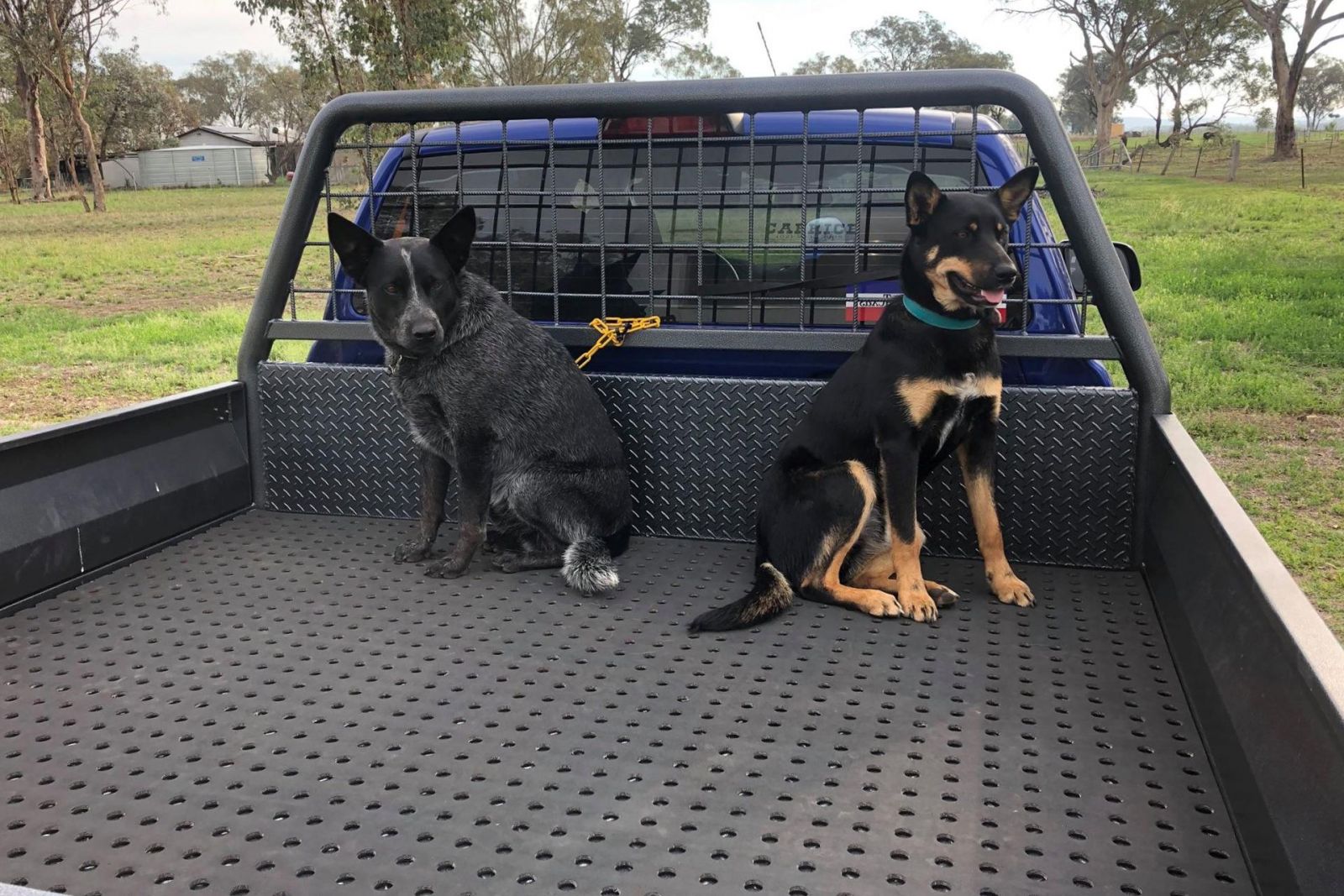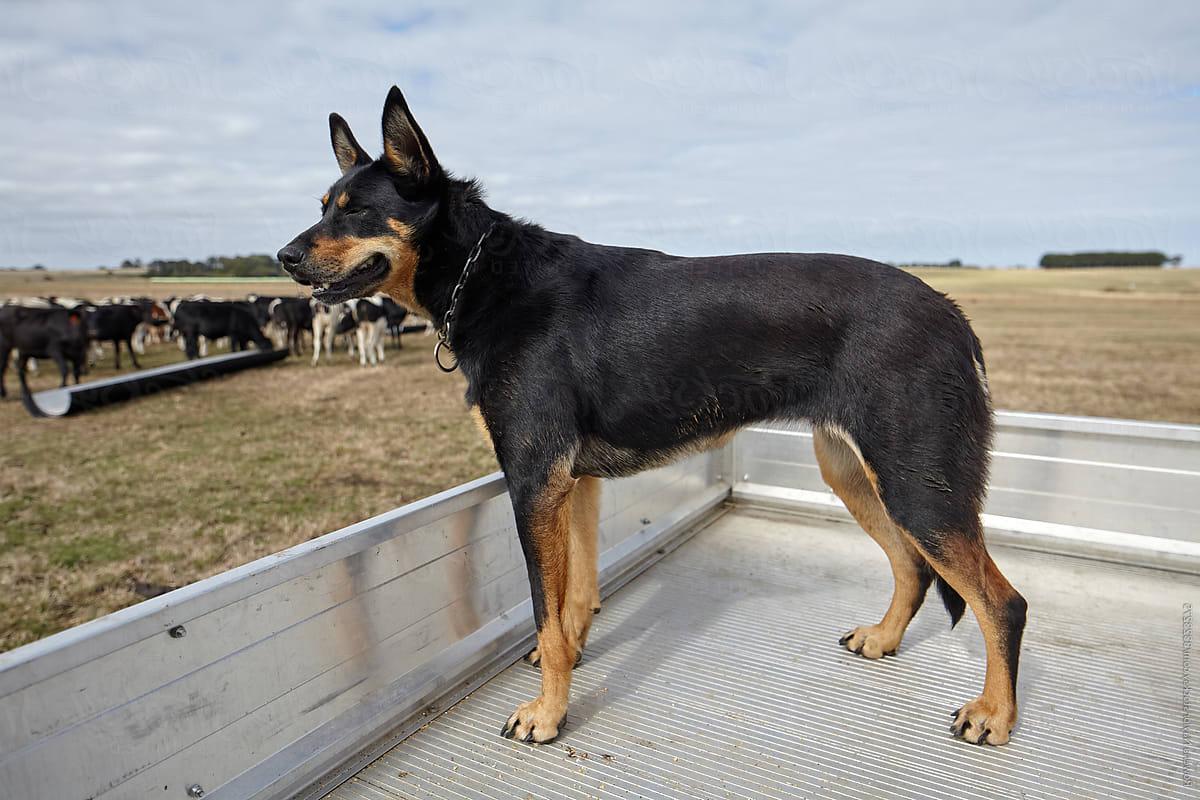Farmers are known for letting their dogs jump in and out of the backs of their utes, but that’s not a practical thing if you’re not driving in a paddock.
- You can have a dog in the tray or tub of your ute in some states
- There are laws about the surface the dog is on, and how it is restrained
- You must tether your dog if they are in the back of your ute
As such, it makes sense that if you want to travel with your pup in the back of your ute, you have to ensure the animal is restrained, and in some parts of Australia, you are not allowed to have the dog in the tray or tub of your vehicle at all!
If you do the wrong thing and are caught for it, it’s more than just a slap on the wrist, and that’s because the laws aren’t considered road rules – they fall under animal protection laws – meaning you may face fines in excess of $8000, and you could face imprisonment for up to six months, depending on the jurisdiction.
Here’s a rundown:
NSW
The Prevention of Cruelty to Animals Act 1979 (section 7) states that “a person must not carry or convey a dog (other than a dog being used to work livestock), on the open back of a moving vehicle on a public street unless the dog is restrained or enclosed in such a way as to prevent the dog falling from the vehicle”. Fines up to $5500 and/or six months imprisonment apply.
ACT
Section 15A of the Animal Welfare Act 1992 - you cannot carry a dog in or on a moving vehicle if the dog is not restrained or enclosed in a way that prevents the dog from jumping or falling. Working dogs are exempt. Fines up to $3200 apply.
Victoria
The Prevention of Cruelty to Animals Act 1986 Section 15A states that for transporting a dog in a vehicle with a tray (a ute, or cab-chassis vehicle) or in a trailer, the dog must be secured so as to prevent it from “falling off or out of, or from, or moving off, the tray or trailer (as the case requires); or being injured from the movement of the motor vehicle or trailer. The rules don’t apply to stock dogs. Penalties up to $1850 may apply.
Queensland
The state recently passed the Animal Care and Protection Amendment Bill 2022, which – like other states, allows for farm dogs to remain unrestrained. However, it states: A driver must not transport a dog on the tray of a vehicle or on a trailer unless the dog is secured in such a way as to prevent it from — (a) falling off, or out of, the tray or trailer; or (b) moving off the tray or trailer; or (c) being injured by the movement of the vehicle or trailer.
If you do the wrong thing by your furry friend, the maximum penalty imposed could be 60 units, or a whopping $8625 fine.
NT
In the Northern Territory, the rules are more strict than in other parts of the country, though there is leniency for dogs working stock. Section 34 of the Animal Protection Act 2018 (NT) states: A person commits an offence if: (a) the person transports a dog by a motor vehicle or trailer on a public street; and the person transports a dog by a motor vehicle or trailer on a public street; and (b) the dog is not inside a passenger compartment of the motor vehicle; and (c) the dog is not secured in a way that prevents it from being injured by falling from the motor vehicle or trailer.
The maximum fine is 50 penalty units – which works out to $8100.
South Australia
According to Section 45 of the Dog and Cat Management Act 1995, a person must effectively secure a dog by: “(i) by placing it in a cage, vehicle or other object or structure; or (ii) by tethering it to a fixed object by means of a chain, cord or leash that does not exceed 2 metres in length”.
There are exemptions – droving dogs, stock dogs and assistance dogs may fall outside of these rules.
Western Australia
Section 6.2 of the Standards and Guidelines for the Health and Welfare of Dogs in Western Australia 2020 states that people driving with a dog must ensure that, if the dog is to be transported on the open back of a moving vehicle on a road, it must be: (a) provided adequate shelter during extremes of weather; and (b) suitably secured by enclosing the dog in a transport crate fixed to the vehicle; or (c) restrained by a tether where; (i) the length of the tether allows the dog some movement, including to stand and lie down, but does not allow the dog to jump or fall off the tray; and (ii) the tether is not attached to a choke chain or other device which may tighten around the neck.
Furthermore, this statute states that a dog may not be transported in the boot of a sedan, and that transport crates must be escape-proof and offer enough room for the dog to sit and stand, plus also, if fixed to a vehicle, be so “securely in a position which provides adequate air flow and quality and minimises exposure to exhaust fumes and dust.”
Tasmania
It doesn’t appear there is any specific rules around the requirements for tethering a dog or securing a dog in the cabin or tray of a vehicle, however it is stated in the Dog Control Act 2000 Section 16 (3): The owner or person in charge of a dog must restrict the dog sufficiently while it is in or on a vehicle so that it is unable to leave the vehicle or attack any person or animal outside the vehicle. Penalties apply – up to $905 fines are applicable.
Not intended as legal advice. Check with the relevant roads authority in your state or territory.


